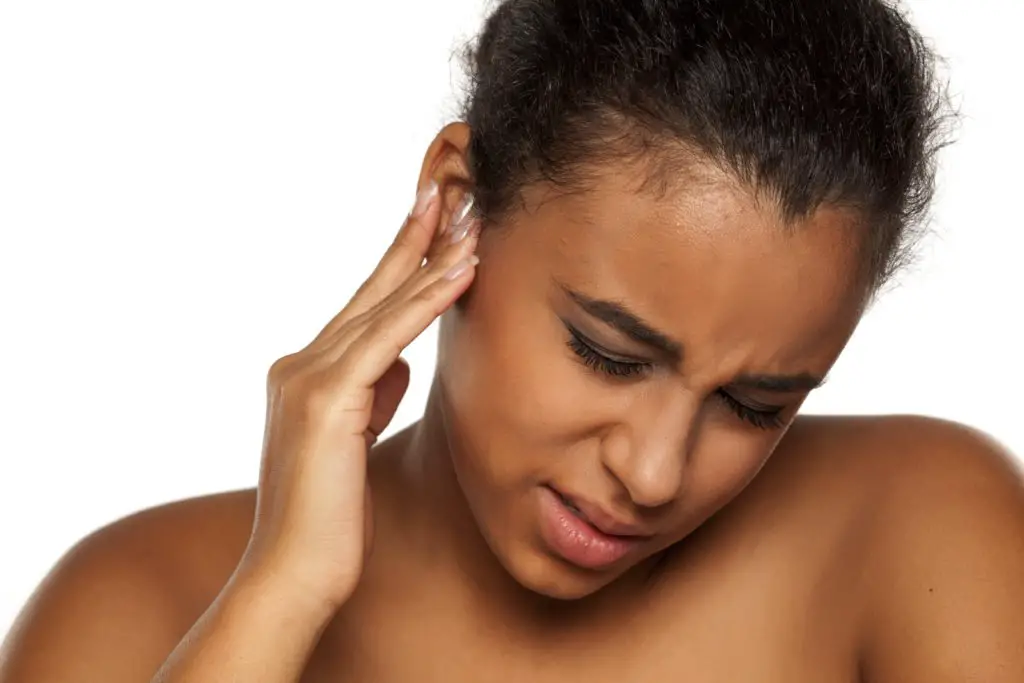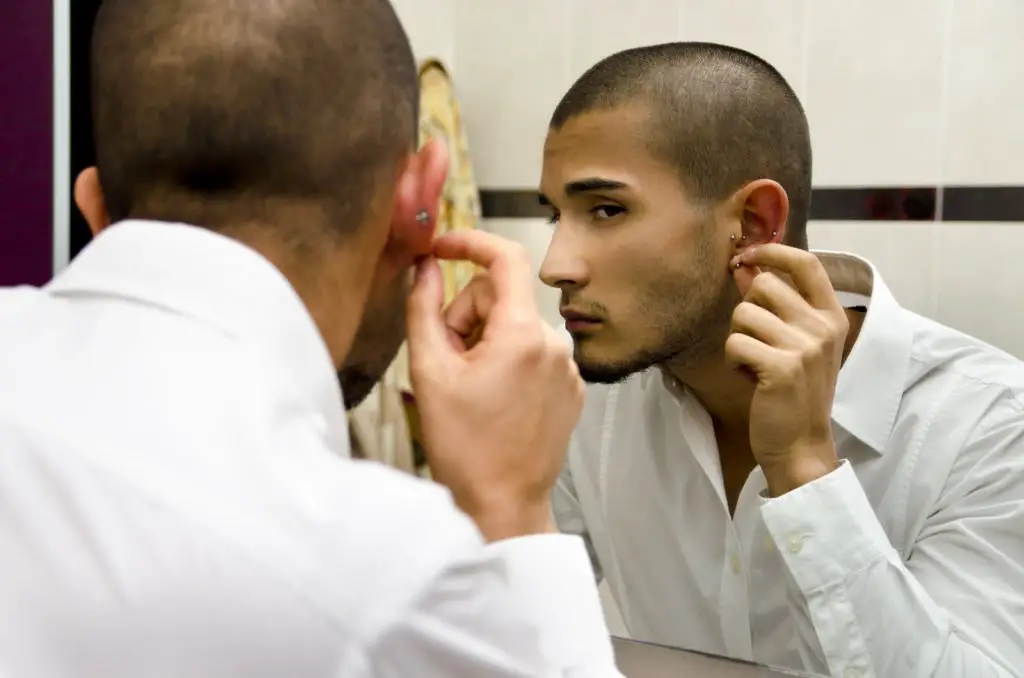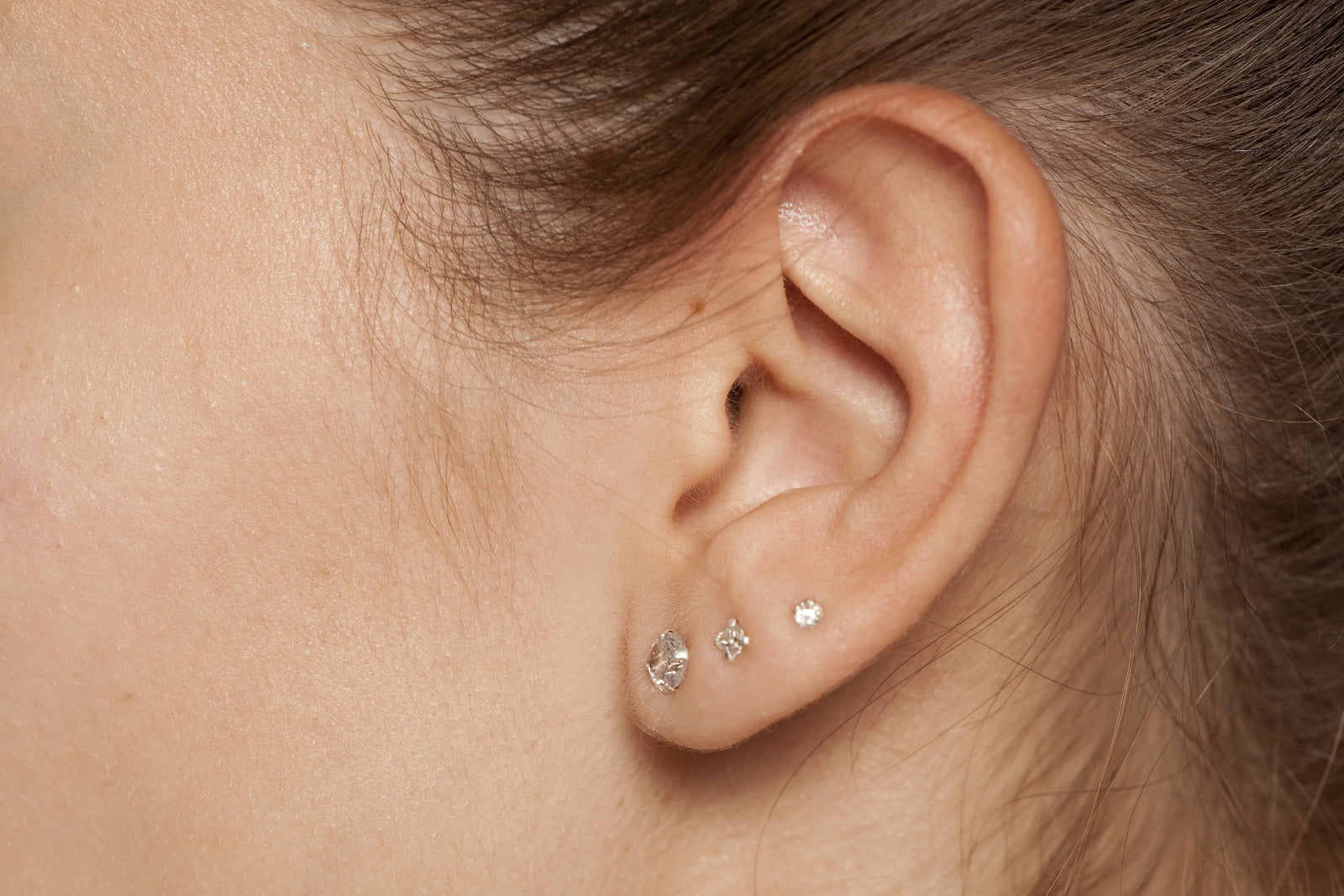Does getting your own ear pierced sound like fun? If yes, then you’re probably searching for a guide that shows how to pierce your own ear. Of course, you could get a professional ear piercer to do it for you but then you’ll save a lot more money if you did it yourself.
However, you might be wondering if it’s advisable to pierce your own ear at home and what to do after the piercing process. So, in this guide, we will show you how to pierce your ear safely at home without visiting a professional.
Is It Safe To Pierce Your Own Ears?
Getting your ears pierced looks cool but is also a path you want to tread with care, especially if you’re new to this. We guess you already knew that which is why the first thing you’d logically want to know is how safe it is to pierce your own ears. The process is basically safe but requires your sticking to some set rules to get it done right. Knowing what is involved and how to do your own ear piercing can help keep your ear from getting infected.
How Painful is Needle Ear Piercing?
So how much does it hurt to pierce your own ear? Each area of your ear produces different levels of pain all dependent on some factors. Determining how painful it is to pierce your ear rests on your preconceptions, as well as anxiety level. You’ll also have to consider how skilled the piercer is and the quality of the needle used.
The more cartilaginous parts of the ear tend to produce more pain than the earlobe. Of course, the stinging sensation created is totally normal and is something you can bear until you’ve completed the process.
Since a piercing needle comes with a hollow center, it makes it easier to get your earring into the hole once the needle goes through. Just ensure that the needle surpasses the earring in size by one gauge.
Many consider a piercing kit to be more convenient since it has a spring puncher loaded with two piercing earrings that are sterilized of course. Consider buying high-quality titanium or silver piercing earrings from jewelry stores since such earrings put you at a lesser risk of infection.
How To Pierce Your Own Ear Without Pain

While a stinging sensation is not uncommon, there are things you can do to numb your ear before piercing it. Some of these include:
- Skin taping your ear strongly to help desensitize it briefly
- Using essential oils to mitigate the pain
- Applying icepacks or a cold compress to the ear
- Generously applying a numbing cream for half an hour to help numb the area.
However, we’d say it’s best to not numb the pain during the procedure. That’s because being able to feel what you are doing while piercing your ear at home is important in getting it right.
How To Pierce Your own Ear at Home: The Steps
You’ll need the following items:
- Marker
- Sterile piercing needle
- 16 gauge, 10mm long piercing earrings
- Sterile latex gloves
- Soap and water
- Rubbing alcohol, hydrogen peroxide, or 70% isopropyl alcohol
The set-up
Once you have all the necessary items in place, follow these steps:
- Wash your hands thoroughly with soap and water to keep them from spreading bacteria. Then slip on your sterile latex gloves.
- Wipe your ear clean with rubbing alcohol, hydrogen peroxide, or prepackaged 70% isopropyl alcohol. That should help get rid of any bacteria around the region to be pierced.
- Mark out the point on your earlobe to be pierced. You want to plan this ahead of time so that you don’t end up piercing your ear too low or too high. If you’ve got other piercings, leave sufficient spacing in between them and the new hole. That’s because you want to avoid any overlap when wearing earrings, but take care to not over-space the holes.
- Now get your sterile piercing needle and sterilize it in boiling water anywhere from 5 to 10 minutes. You can get piercing needles from online stores or piercing studios. After sterilizing, wipe it down with rubbing alcohol or hydrogen peroxide.
You may also sterilize with an open flame until the tip of the needle becomes extremely hot. Wipe off detritus or soot using hydrogen peroxide or rubbing alcohol. All this should be done with you wearing sterile latex gloves to prevent bacteria from getting on the needle. This form of sterilization with an open flame may not eliminate all microbes except you use an autoclave. So you might want to keep that in mind.
Piercing Your Ear
Now you’re fully set up and ready to get your ear pierced. Here’s what to do:
- You’ll have to pierce your ear with care so that you don’t risk causing injuries to your neck. So place something sturdy against your ear (a cork or a clean bar of soap). You can ask a relative to help you hold the soap and maybe even do the piercing for you, which could be way smoother than doing it yourself. You’ll often see people use solid food like potatoes and apples but that’s not advisable because such food may carry infectious bacteria.
- Next, you want to get the needle positioned at a 90-degree angle, perpendicular to the spot that you have marked out. This will help it to get it through your ear more easily.
- Now it’s time for the actual piercing. Breath in deeply and pierce through the marked spot with the needle. Don’t panic if you hear a popping sound. Once the needle slides through, wiggle it and bend it a bit while threading the earring through its center. Then keep pushing the earring through until it fits into the new hole.
- At this point, you can take out the piercing needle while keeping the earring in place. You want to do it slowly and steadily even if you experience some pain. That’s because you can’t risk the earring falling out. If that should happen, you’ll have to restart the procedure.
- If the earring does fallout eventually, the newly-created hole can close up fast. You’ll then have to sterilize the earring again as fast as you can and get it into the hole. And you’ll have to pierce again if it doesn’t work.
Check out this video that carefully teaches you how to pierce your ear step by step.
How Do I Care For My Piercing While It Heals?
You’ll find that the different parts of your ear are not similar in vascular characteristics. Your earlobe experiences a higher blood flow than other cartilaginous areas, so this influences the length of time required for your piercing to get fully healed.

So to care for your ear after a piercing, here are some tips:
- Give it a gentle saline solution wash. Do this two to three times every day and that should keep it in good shape.
- Avoid playing with or twisting your earrings.
- Take extra care to not sleep on your piercing.
You have to wear your piercing earring for six weeks at the very least before changing it. That should give it enough time to heal, after which you can then switch it up and go with something fancier.
What Are the Side Effects of Piercings?
When you pierce your ear, your skin becomes exposed to some risks and possible side effects.
You might experience a discharge, some pain, swelling, and redness, which all suggest an ear infection.
If you fail to heed health precautions and use contaminated equipment, you risk picking up blood diseases like HIV, tetanus, hepatitis B, hepatitis C, etc.
You can also experience issues with your skin which include scars and keloids. Allergic reactions are also not uncommon, especially when you use nickel or brass jewelry.
How To Pierce Your Own Ear With an Earring: QnA
Is it a bad idea to pierce your own ear?
No, it’s not a bad idea to pierce your own ear. Earrings are safe to pierce at home. In fact, It is so much cheaper than going to a professional place and getting it done. And there are numerous cases of people piercing their ears and living a healthy life afterward.
Can I pierce my ear with a sewing needle?
Even if you could, it’s a bad idea to do so. Please do not use a sewing needle to avoid the risk of infecting your skin seriously. Use a sterile piercing needle instead.
What is the fastest way to heal an infected ear piercing?
There is no perfect way to heal an infected ear piercing. You should begin by sterilizing the area around the piercing with rubbing alcohol, then use a clean needle to remove any visible dirt or matter from the area. You can also use a cotton ball to help flush out the dirt and pus. If the infection is severe, you may need to take antibiotics or other medication in order to heal it faster.
Should I rotate my ear piercing?
Avoid rotating your stud so that you don’t disturb the already healing skin. Doing so could lead to the formation of scars or cause an infection to occur. Simply leave your piercing alone.
How bad does it hurt to pierce your own ear?
How much does it hurt to pierce your ear? Not much. You’ll probably feel a sting and some throbbing but the feeling subsides after a while. Earlobe piercings are less painful than cartilage piercing or helix piercing since it has more fatty tissue.
Final Thoughts on Ear Piercings
Getting your own piercing sounds like a whole lot of fun but you have to be extra careful if you decide to do it yourself. Professional piercers have to undergo apprenticeship programs for months. That’s why they are able to carry out the process with precision and finesse.
With the information contained in this guide on how to pierce your own ear at home, you now have sufficient knowledge. So you can follow the steps outlined, as well as our post-piercing care tips to get it done yourself.
